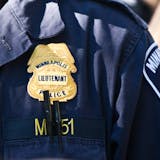No one gets a free pass — not our doctors or pharmacists, not our schools or hospitals, not our teens, coaches, government, religious or business leaders, not even our media outlets. Everyone must own the problem of opioid addiction if we are going to turn the crisis around.
Every year now, more people die in Minnesota from opioid-related overdoses than in car accidents: OxyContin, Vicodin and Percocet have become just as deadly as heroin. Last year there were 1,300 such deaths in New York City, 700 in Philadelphia. In 2016 we had 153 deaths just in Hennepin County, up 39 percent from 2015.
In Hennepin County, and across the nation as a whole, the rate of opioid-related deaths is roughly three times the murder rate. If we had 153 homicides in one year, that would get some attention.
Every overdose death is both tragic and preventable. So when will this be declared a public health crisis? When will we tell big pharma to stop the incentives to doctors, and force them to publicly acknowledge the extremely addictive nature of opioid-based painkillers?
When will we ask our doctors to stop accepting the incentives and prescribe alternatives?
When will we require mandatory reporting from our pharmacists so we can investigate these deaths as they should be investigated?
According to the 2012 National Health Interview Survey, an estimated 126 million Americans reported suffering from some form of severe or chronic pain, and an estimated 2.1 million Americans are addicted to prescription painkillers. In 2017, the number of pain medication prescriptions in any given state ranges from 50 to 146 percent of that state's population.
I'm sure our doctors, pharmacists and even the drug manufacturers began with good intentions, believing these drugs could be prescribed safely. But now we know they can't be, and should not be used for anything but the most severe pain or end-of-life care.



